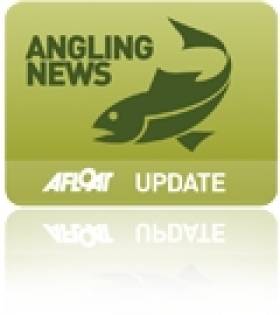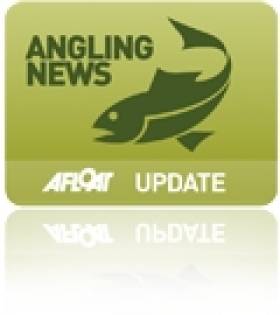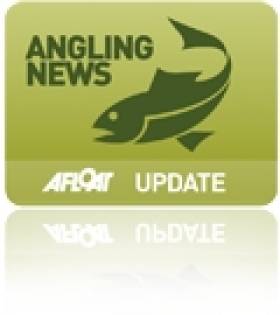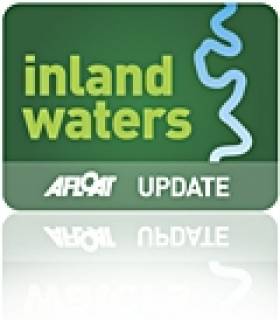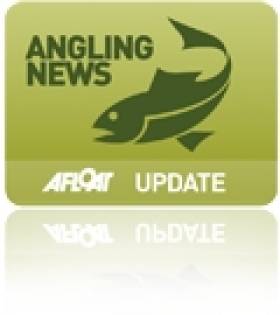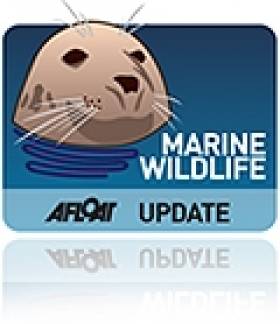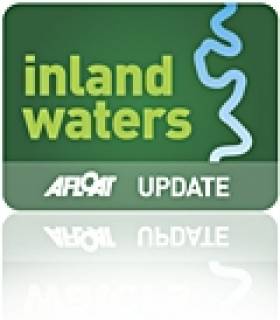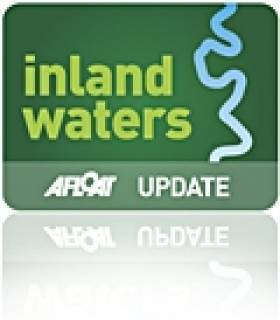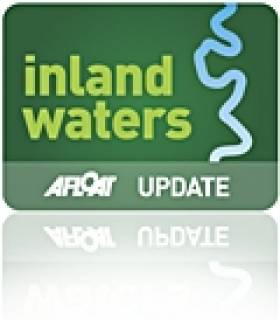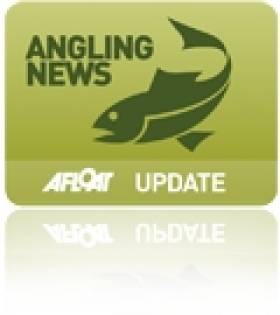Displaying items by tag: invasive species
Invasive Species Questionnaire for Ireland's Anglers
#InvasiveSpecies - When invasive aquatic species become established, they cause significant damage to freshwater ecosystems, fish populations and to the economies that depend upon them.
Next to habitat loss, invasive species are considered the greatest threat to native biodiversity. Anglers play a vital role in protecting the native and unique fish stocks and waterways on the island of Ireland.
Inland Fisheries Ireland and the Institute of Technology Sligo are looking for anglers to take a short online questionnaire on angling and invasive species.
The questionnaire should take no more than 8 minutes and can be completed anonymously. Your views would be greatly appreciated.
#Angling - From today 1 June, Northern Ireland's anglers are banned from selling salmon caught in rivers under new measures from the Legislative Assembly.
As BBC News reports, Minister for Culture, Arts and Leisure Carál Ní Chuilín said that the new rules are "the first step in a series of conservation measures aimed at protecting stocks of the iconic Atlantic salmon".
The rod and line catch sale ban is intended to encourage the practice of 'catch and release' which is set to become mandatory next year, and also brings NI legislation into line with the rest of Britain and the Republic of Ireland.
It comes months after the shocking news that just three out of every 100 wild salmon returned to Northern Ireland's rivers in 2011, prompting concerns that the species has declined to "Dodo levels".
Moves have already been made to control the commercial offshore netting of salmon in order to boost their numbers in the North's waterways.
Another threat to salmon numbers is the rise of invasive species in Northern Ireland's waterways, which as the News Letter reports have cost the economy more than £46 million a year, according to Environment Minister Alex Attwood.
Highlighting the risk to NI's marine wildlife and plantlife, as well as fisheries and agriculture, the minister said "increasing awareness of the threat of invasive species and the need to tackle them is key to achieving success".
A new strategy by the Legislative Assembly will involve partnerships between government, the community and environment groups "working in tandem" to deal with the problems caused by invasive species such as the Japanese sea squirt, detected in Strangford Lough last year.
#Angling - Minister Fergus O'Dowd launched Ireland’s first purpose-built disinfection station for angling enthusiasts at Ballyhoe Lake in Co Cavan on Wednesday 3 April.
The new facility - developed by Inland Fisheries Ireland (IFI) in co-operation with Interreg IVA (CIRB), the Irish Angling Development Alliance (IADA) and the local Meathhill Angling Club - will facilitate the disinfection of angling equipment on entry to the lake, helping to ensure that unwanted alien invasive species and harmful fish pathogens can be kept out of our natural fisheries.
Moreover, the development will also provide a template for further such facilities on fishery watercourses throughout the country.
The disinfection station is located at the entrance to Ballyhoe Lake, a prime Irish specimen tench fishery.
The entrance gate and the disinfection station are secured with combination locks, the numbers for which are available through nominated members of the Meathhill Angling Club (contact numbers for these members are provided on the tank). Members of the club will replace the disinfectant and manage the facility locally, as necessary.
Once opened, the tank contains a disinfection container for boots, keep nets, landing nets and stink bags. Disposable gloves are provided for angler use while disinfecting, and a brush is available to scrub boots, as well as a spray bottle for boats coming onto the lake.
Signage adjacent to and underneath the lid of the tank provides step-by-step instructions for the angler. Once the gear has been disinfected, the anglers apply a tag to his or her net to show that the process has been completed. Different colour tags will be utilised at the discretion of the operators.
Congratulating Meathhill Angling Club and the IADA at the launch, Minister O'Dowd said: "Angling clubs and federations the length and breadth of Ireland are key to the protection of our angling resources. By providing facilities such as this, we are adding to the goodwill and community commitment of Meathhill Angling Club to protect their fishery, while also ensuring access to it.
"This access helps to safeguard the sustainability of our valuable resource which will continue to bring much needed revenue to the local community through responsible angling activity."
The minister added that he "can’t emphasise enough the role anglers and clubs have on the frontline in the fight against invasive species, which supplements the great work in the area carried out by IFI with the support of representative bodies such as IADA."
IFI Addresses EU Parliament on Invasive Alien Species
#InvasiveSpecies - Dr Joe Caffrey of Inland Fisheries Ireland (IFI) presented Ireland’s position on the threat of invasive alien species to Ireland's waterways at a high-level debate at the European Parliament in Brussels on 21 February last.
Discussions centred on the issue of invasive alien species in Europe and the development of an EU policy instrument to tackle the threats.
The debate, titled ’Biodiversity’s Ticking Time Bomb: Understanding and Addressing the Problem of Invasive Species in Europe’, was organised via the International Union for Conservation of Nature (IUCN) and Birdlife, with the support of the European Habitats Forum.
Dr Caffrey was one of nine speakers who presented to the large gathering where he addressed the theme ‘The challenges and opportunities of member states in implementing EU legal measures: the example of Ireland’.
The talks were followed by a highly interactive panel discussion during which the pros and cons of a dedicated EU legislative instrument on invasive alien marine species were debated. The results of EU deliberations on this theme will emerge in the coming months when a consultation document will be released.
In the meantime, IFI and EIFAAC will host the FINS (Freshwater Invasives – Networking for Strategy) Conference in Galway on 9-11 April which will address key topics relating to freshwater invasive species and harmful aquatic pathogens.
The conference is attracting a large international audience of policy makers in this area. The primary objective of the conference is to provide a forum where international scientists, policy makers and stakeholders will address designated themes with a view to informing management and policy development in this increasingly important area.
Minister Fergus O'Dowd, who recently launched the world's first angling kit to combat invasive species, said of the conference: “Invasive species cause some €12.5 billion worth of damage each year in the European Union alone and are a serious threat to native biodiversity across the continent. IFI is keenly aware of the threat to our own natural resources, particularly to our economy, health and recreational activities.
“I want to congratulate IFI on the lead it has taken in its scientific, practical and proactive approach to this issue, working with stakeholders on the front line to ensure that biosecurity awareness is paramount. They are also bringing Ireland’s first-hand experience to Europe and adding to the positive debate on an EU wide cooperative framework to safeguard our natural resources through legislation and knowledge transfer."
The FINS conference will be held at the Galway Bay Hotel and Conference Centre in Salthill, Galway, Ireland from 9-11 April 2013. For more details visit the FINS Conference website.
Minister Launches 'World's First' Angling Kit To Combat Invasive Species
#Angling - The fight to stop the spread of invasive aquatic species in Ireland took to the frontline at the weekend with the launch by Minister Fergus O'Dowd of an Individual Angler Disinfection Kit – the first of its type in the world.
The kits are produced by Inland Fisheries Ireland (IFI) and funded by the CIRB (Controlling Invasives, Restoring Biodersity) INTERREG IVA Project, and were launched at the Ireland Angling Show 2013 on Sunday 17 February.
The kit is available in a durable and convenient kit bag and comprises 20 Virkon Aquatic (50g) tablets; a 500ml plastic trigger spray bottle; disposable gloves; a stiff bristle brush for cleaning boots, etc; a practical instruction manual; invasive species identification cards on a handy key ring; a metal ‘Stop the spread of invasive species’ badge; and an array of useful and relevant invasive species literature.
Now available from IFI, the kit will cover disinfection for up to 20 angling trips, and will help ensure that invasive species are not spread by unsuspecting anglers as they move from one watercourse to another.
In recent years, IFI says it has worked closely with anglers’ federations, clubs and other grouping to ensure that they are aware of the risks posed by aquatic invasive species and of actions that they can take to minimise the risk of introducing or spreading these aggressive and potentially harmful species. Invasive species include aquatic plants, animals (insects and fish) and microscopic pathogens.
The minister said: “Disinfection facilities have been developed by IFI to cater for large groups of anglers attending organised competitions and these have been well received. However, there are many anglers who do not fish competitions and who like to seek the solace of a quite water body where they can test their skills against the resident fish or simply watch a float as it bobbles in the water.
“We want to raise awareness among these anglers and help them in the same way as competition anglers to guard against the introduction or spread of invasive species or harmful pathogens."
Logistically it is impossible to provide disinfection facilities at every watercourse in the country to cater for all of Ireland's anglers, so a different approach was required. IFI says it recognised the long-standing responsibility taken on by anglers to protect and not adversely impact the aquatic habitat or water quality, so it is providing anglers with a portable kit to make disinfection more efficient and cost-effective.
At the show, Minister O'Dowd demonstrated the kit with the assistance of Dr Joe Caffrey of IFI to show how individual disinfection of angler’s equipment and clothing is relatively simple and can prevent highly damaging invasive species such as Asian clam and zebra mussel, and fish pathogens like the salmon fluke Gyrodactylus from being transferred into un-infested water bodies.
The minister commented: "As I meet more and more anglers around the country I am struck by your enthusiasm, knowledge, expertise and environmental responsibility. As a budding angler myself I look forward to using this kit and I know that you will embrace this initiative to ensure that fishing as we know it now can continue and improve under our watch, safe from the introduction of hazardous invasive pathogens, plants and animals."
Invasive Sea Squirt May Be in Strangford Lough
#MARINE WILDLIFE - The Northern Ireland Environmental Agency (NIEA) has indicated the possible presence of Japanese sea squirt on the bed of Strangford Lough, as the Press Associaton reports.
Experts are attemping to confirm the identity of the invasive organism that has posed a threat to mussel and scallop populations across the Irish Sea in north Wales.
The sea creature, Didemnum vexillum, spreads like a blanket across the seabed and other surfaces, smothering shellfish and other marine life in the process. It is often transported over large distances on boat hulls and fishing equipment.
It was discovered late last year in Holyhead marina, and Welsh athorities spent £250,000 on an extermination project to prevent its spread into the Menai Strait - at the heart of the region's shellfish industry.
Dr Rohan Holt, a senior scientist from the Countryside Council for Wales, has now been called in to advise on how to manage the threat should it indeed be confirmed as the Japanese sea quirt.
Meanwhile, members of the public have been urged to report any possible sightings of Japanese sea squirt with photos through the 'Alien Watch' section of the Invasive Species Ireland website.
The Press Association has more on the story HERE.
Strange Goings On As Turtle, Carp Appear in Royal Canal
#INLAND WATERWAYS - The Irish Times recently reported on some strange and unusual findings along one of Ireland's longest inland waterways this summer.
Angler Tony Masterson was more than a little surprised to discover he had caught a red-eared slider turtle in the Mullingar section of the Royal Canal last month.
The 30cm turtle is of a species native to the southern United States, so is presumably an abandoned pet - a cause of concern as the number of invasive species in Ireland continues to expand.
Inland Fisheries Ireland (IFI) senior scientist Joe Caffrey reminded the public that it is "illegal to release any species that is not normally resident in Ireland into the wild" and added that the IFI "will continue to monitor the canal to ensure this is a once-off case".
Curiously, a wild salmon was caught the same stretch of canal last year.
It's thought that the salmon entered the canal via the water supply system from Lough Owel, which is connected to the Shannon by the River Inny.
IFI officers have also confirmed the sighting of a koi carp in the Royal Canal, which "appears to be in good condition".
Minister Launches Invasive Species App for Smartphones
#INLAND WATERWAYS - Minister Fergus O'Dowd was on hand to launch a new smartphone app to help fight the war against aquatic invasive species and pathogens in Ireland.
The launch at Galway Weir last Monday coincided with the opening of a disinfection facility for salmon anglers and a durable set of invasive species ID cards on a key ring as a handy reference for angling and boating enthusiasts on Ireland's inland waterways.
Launching the initiatives, Minister O’Dowd said: "Unfortunately, the number of invasive species recorded in Ireland is continuing to expand. It is important that all technologies available to us to combat these potentially disastrous invasions are utilised.
"I am delighted, therefore, that we are able to harness the power of smartphone technology in our ongoing campaigns to help prevent their spread. I would urge all anglers and water users to help us by downloading and using the app."
The 'Habitats - Invasive Species' app for Android devices allows users to photograph and automatically record the location of environmentally damaging and potentially hazardous aquatic and bankside invasive species - such as the notorious Asian clam that has taken residence in the Grand Canal, the River Shannon and Lough Derg.
The geo-referenced photos of suspected invasive species are uploaded to a central server for verification by scientists with Inland Fisheries Ireland (IFI).
If a new location for an invasive species that is already known to occur in Ireland is recorded, it will be uploaded onto IFI’s interactive distribution map which can be accessed at www.fisheriesireland.ie.
If a new species to Ireland is recorded, IFI will implement its 'Rapid Response' protocol and the sighting will be immediately investigated.
The new app was developed in conjunction with MAC (the National Microelectronics Application Centre) as part of the EU Inspired Habitats Project, is available for free download from Google Play.
"Already, discussions have taken place countrywide with angling clubs and federations about how best to implement disinfection for all domestic and tourist anglers – be they salmon, trout, pike or coarse anglers," said IFI's Dr Joe Caffrey.
"The level of cooperation received to date is most heartening and reflects the growing concern among this stakeholder group about the obvious dangers to their sport and to the environment posed by aquatic invasive species and pathogens."
#INLAND WATERWAYS - Inland Fisheries Ireland has reiterated its call for assistance in stopping the spread of the invasive Asian clam.
It comes just weeks after the fisheries body was alerted to a reported sighting of the highly invasive species in the Grand Canal at Pollagh in Co Offaly.
As previously reported on Afloat.ie, IFI describes the Asian clam (Corbicula fluminea) as "a most unwelcome addition" to the fauna of Ireland's inland waterways.
The bivalve mollusc is regarded as "one of the most notorious aquatic invasive species in the world", and poses a "major threat to Ireland's habitats, native species and internationally renowned fisheries."
The clam is already firmly established in the River Nore downstream of Inistioge and in the lower Barrow, where it has achieve a "staggering" density of almost 10,000 per square metre, and populations have also been recorded in the River Shannon and in Lough Derg.
IFI warns: "Considering that each clam can produce up to 70,000 juveniles each year, the potential for the enormous expansion of this population is apparent."
In order to limit the further spread of the Asian clam, IFI is urging all water users, particularly anglers and boaters, to implement strict biosecurity measures, including disinfecting all equipment that has been exposed to or used in waterways when moving from one area to another.
Further information on these measures can be found on the website for CAISIE, the Control of Aquatic Invasive Species in Ireland programme, and on the IFI website. Any new sightings of the Asian clam should be reported to IFI immediately.
IADA Hosts 'Biosecurity Awareness' Evenings for Anglers
#ANGLING - The Irish Angling Development Alliance (IADA) is running a series of biosecurity awareness evenings at venues across Ireland over the next two months.
The evenings follow from the "success" of the IADA's awareness section at the recent Ireland Angling Show, and will provide an opportunity for more people to "meet with experts in the field and see what invasive species are first-hand".
Three events, in association with Inland Fisheries Ireland, are scheduled:
- 27 March at the Wetlands Centre, Ballybay, Co Monagahan (hosted by the Ballybay Angling Association)
- 18 April at the Cavan Crystal Hotel, Cavan (hosted by the Cavan Anglers Club)
- 23 May at the Salthill Hotel in Salthill, Galway (hosted by the Galway CAC)
All events run from 7:30pm till 9pm. Admission is free and all are welcome.
For more information contact Peter Walsh at [email protected]




























